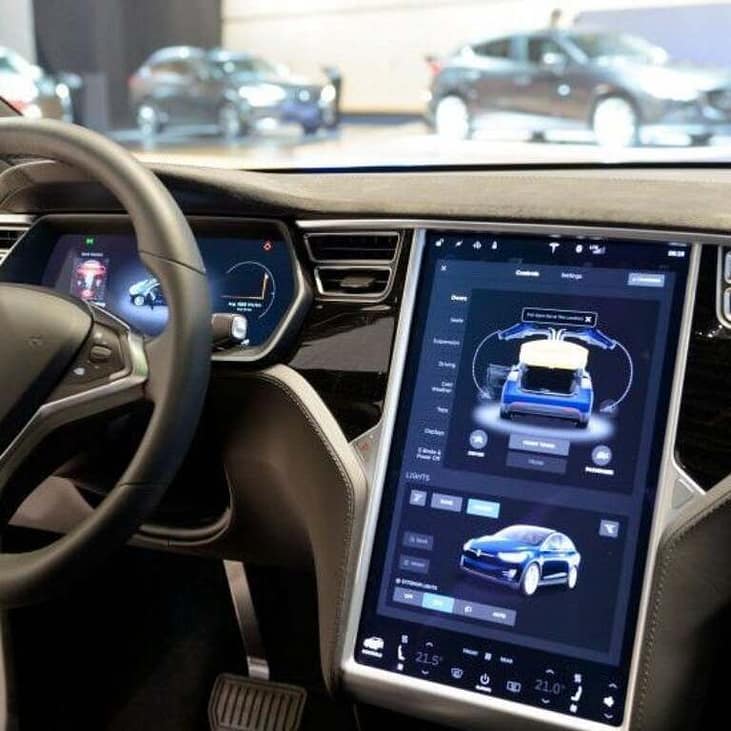“Internet of things,” by definition, is the concept of devices connected by a series of protocols in order provide greater interoperation, capacity, and sense of self-automation combined with artificial intelligence in order simplify daily workstream processes. While this concept seems complex, the “Internet of things” is actually a very simple workstream.
Vision
Having actual real time data from active sensors feeding into artificial intelligence engines is the future of energy efficiency and better safety transportation. Having the car make quick adjustments to the drive path to avoid an accident or a possibly having an IOT sensor continuous adjust the airflow to keep the car cooler to conserve battery power is closer to near term than most people realize. Tesla’s (Tesla) self-driving feature continues to make headlines as the next up and coming feature that will help drive greater connection between the car and the IOT sensors deployed through the cities and highways. Blackberry (Blackberry QNX) through their autonomous car division in Canada developed an operating system that connects all 452 IP enabled sensors inside the car. By using their QNX operation system, these sensors can communicate with traffic lights, sense when another car is nearby or if the driver has a medical emergency, the vehicle will be smart enough to notify and proceed to the nearest hospital. These are all becoming acceptable use cases for IOT.
Will autonomous cars and other forms of transportation work without an IOT strategy? The challenge is not the lack of vision for IOT, the major issue is the lack centralized engineering standards and protocols. For an autonomous car to communicate with remote IOT sensors like stop lights, each sensor within the car will need to continued need to be operational and with the most updated software firm to insure predictable operations. The revolution of “Over the Air” software updates in real time became mainstream with the cell phone manufacturers like Samsung (Samsung OTA) and Apple. With the car hosting so many IOT sensors, how would the car be able to keep up with the constant change in firmware and security patches? Blackberry along with competing solutions from Toyota and other car manufactures place a huge reverence of the core real-time operating systems to receive the various firmware’s and apply the various patches in a flow and staggered fashion. As an example, when a car comes to a complete stop, the real time operating system could begin to apply secondary patches to the various “idol” sensors in the car. Once the car begins to move, the updates will either complete or enter a pause state.
Alignment to the “Smart City” Internet Of Things Strategy
Many cities around the world continue to evolve their infrastructures to include smart power plans, smart transportation, and industrial 4.0 factories. These IP enabled systems combined with a robust 5G infrastructure, slowly becoming the new normal in urban development. Having a greater “interconnection” between the infrastructure and consumption layers within society not only will develop a much cleaning method of energy consumption, this new “smart” thinking is a behind the need for a greater efficiency in the infrastructure itself. By using self-driving autonomous cars, cities can now offer self-driving cars as a service for those that cannot afford transporting by having a series of vehicles circling the city limited assisting many that need to get somewhere quickly. These IOT powered cars will connected through a series of control sensor, traffic cameras, and updated real road conditions while also providing value consumption data based on usage of the service. Currently today in North America, the “ The battery-powered Xcelsior (New Flyer Bus) AV from New Flyer” is currently being used in Connecticut to provide driver-less transportation services.
Companies like Advantech (Advantech IOT) in Taiwan and Qualcomm (Qualcomm IOT) in San Diego California are examples of industry thought leaders in developing IOT sensors and devices for the “Smart City” evolution. Several more companies like Google, Amazon, and Cisco Systems also continue to drive innovation and IOT standards. IOT as an industry is driving several eco-system partners helping to develop security standards, better use of a “over the air firmware” deployment, and cloud-based applications to analyze the data in real time for faster and more efficient solutions. The future of IOT is a lesson in continued change, agile development, and a true collaboration of cities, states, and nations to connect the world to make a different in how we live together.
The Internet of Things is just one of the markets NextGen excels at, please have a look at all the markets we specialize in.
www.NextGenExecSearch.com














